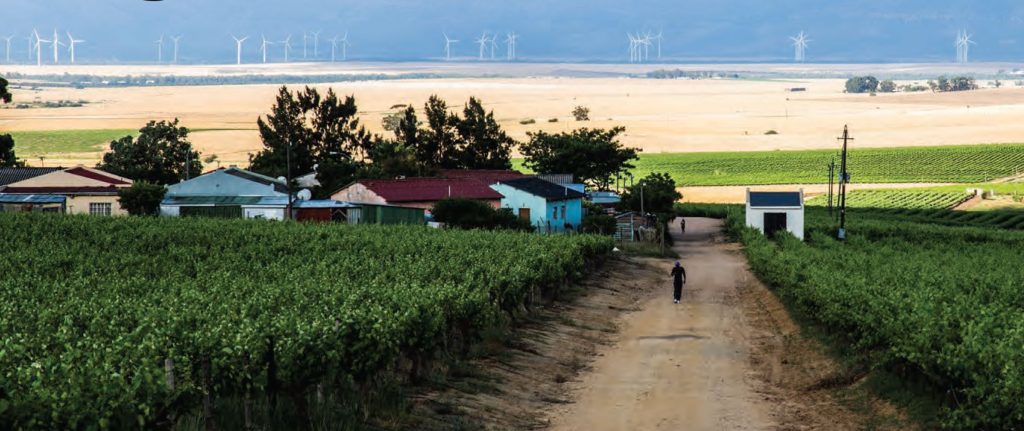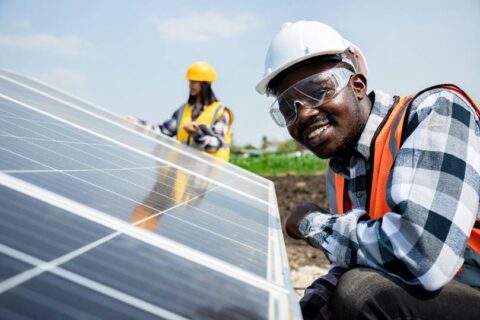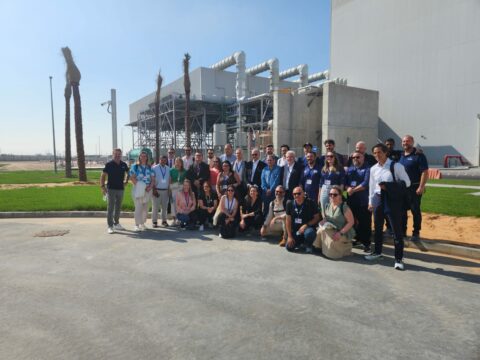Sunday Times Green
A Rising Energy Star
Has the time for renewable energy finally come in South Africa? After years of stop-start talk about renewables, the president used his recent State of the Nation Address to throw his weight behind many issues renewable that campaigners have been asking for.
The measures announced were bold: processing the amending of the legislation to allow municipalities to purchase power from producers other than Eskom and the speeding up of the processing of licences for private own-use power generation above one megawatt (MW).
The president also committed to the Integrated Resource Plan 2019 (IRP 2019), which calls for large wind and solar power and other investment in generation by 2030. The Renewable Energy Independent Power Producer Procurement (REIPPP) programme Bid Window 5 would also be initiated.
In the eyes of many informed South Africans, the regulation of the renewable energy industry seems complex involving multiple role-players. The REIPPP was launched in 2011 and allows for the independent supply of a specified number of megawatts of electricity by commercial bidders, breaking Eskom’s monopoly over power generation. It is now in its fourth bid window (BW) phase. But this phase is behind schedule, thanks to stalling from various stakeholders.
Eskom’s monopoly remains a stumbling block for the entry to trade for independent power producers (IPPs) who are not free to trade their power with consumers in an open market. Instead, they have to supply their power into the Eskom-owned and operated grid at a regulated price set by the National Energy Regulator of SA, another state-owned enterprise (SOE).
A significant step forward has come in the publishing of the South African Cabinet’s approved IRP. The IRP maps out South Africa’s energy mix for the next 10 years and sees overall electricity production capacity rising significantly by 2030. Among many other things, it spells out a role for renewable energy in the power mix. Energy analysts will point out that the current IRP has been a slow-boiled egg, much to the chagrin of the supply chain in the renewables sector, some of whom were forced to close shop.
The IPPP Office, a specialised REIPPP interdepartmental government unit, reported in mid-2019, that wind contributes 52 per cent of South Africa’s renewable supply. There were 36 preferred independent wind power producers with a collective capacity of 3.6 gigawatts (GW) – or at least there will be. Some BW4 projects are still under construction, so right now there are about 900 individual turbines capable of supplying 2GW to the grid.
By way of comparison, the UK started investing in wind power resources as far back as 2003, beginning with an offshore facility in Liverpool Bay. Today, it has an onshore and offshore wind installed capacity of 22GW (more than double the capacity of the proposed nuclear power programme here) and plans to double that by the year 2030.
In the air
The IRP proposes an added 14.4GW of wind power to the South African grid by 2030, which would constitute 18 per cent of total capacity.
“This will have positive spin-offs for the country’s economy as this capacity is expected to attract more than R300-billion in investments, create jobs across the industry value chain, and deliver cheap electricity to consumers,” says Ntombifuthi Ntuli, CEO of the South Africa Wind Energy Association (SAWEA).
According to SAWEA, the value of R300-billion excludes specific investments that will be attracted by the local value change, such as manufacturing, transportation and logistics investment. These investments will flow into a number of sectors including construction, manufacturing, and transportation and warehousing as well as finance and professional services. The B-bBEE impact of these investments will also be substantial.
“We are happy (with wind share of the new IRP mix), as we transition to a clean energy future. With the bulk of the increase coming from renewable sources, it is a promising sign for our country as it faces pressure to reduce its carbon emissions and provide cheaper power,” comments Ntuli.
While there are plenty of areas that have consistent enough wind to meet these targets, the key to dependable renewable energy is to use a mix of different resources. Today, there’s a total of 6.4GW of renewables licenced from a total of 112 different IPPs. Of this, 45 per cent comes from solar: both photovoltaic (PV) panels, and the larger concentrated solar power (CSP) plants. CSP generates solar power by using mirrors or lenses to focus sunlight onto a receiver to generate heat for powering steam turbines.
Dom Wills is CEO of the SOLA Group, one of the downstream operators in the PV value chain. The SOLA Group is not part of the REIPPP programme supplying energy to the Eskom grid. Instead, it specialises in “microgrid” systems across the continent. Microgrids are small-scale, local generation projects connected directly to customers that can be independent of the national grid.
“The key to this vision is that the grid becomes independently operated,” says Wills. “An independent grid operator can run an energy market on a ‘willing buyer, willing seller basis’. This market can have a spot price for energy sales, but there could also be futures and derivative products. A completely open market will allow economics to dominate and multiple sellers of energy to enter the market. This is a robust solution, as there are multiple companies that provide energy to the country instead of relying on one as is the case currently.
“In our view, renewable power will dominate generation in Africa, and worldwide, in the next fifteen years. Africa has a great opportunity in solar, receiving 40 per cent of all the sun’s energy. As storage technology improves, the grid penetration of renewables will tend to 100 per cent by 2050,” he concludes.





